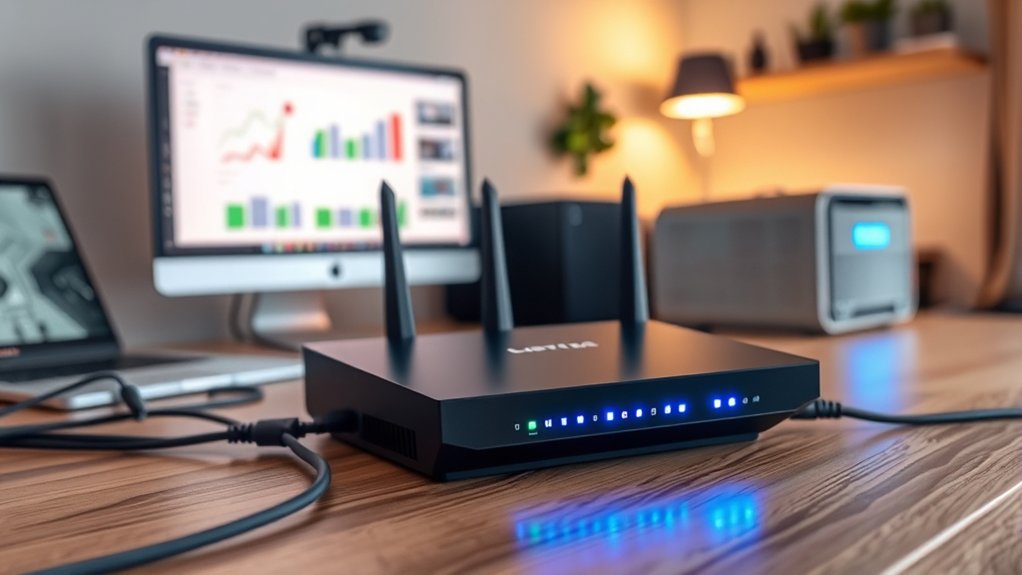Port forwarding is a networking technique that allows external devices to access specific internal services by redirecting data from public addresses to private networks. This mechanism is essential for running web servers and gaming servers, providing seamless connectivity. Utilizing over 65,000 available ports, with many in regular use, effective port forwarding often requires personal security measures. Security risks, such as unauthorized access, necessitate precautions like encryption and strong firewall configurations. Understanding these protocols highlights their importance in modern network management.

Port forwarding is a vital network technique that facilitates the redirection of data from designated external addresses and ports to specified internal destinations within a private network. This process is significant for enabling external devices to connect with services hosted on private networks, such as web servers or gaming servers. By routing data through routers and firewalls, port forwarding allows seamless access to internal devices.
Port forwarding is essential for connecting external devices to services on private networks, ensuring seamless data access.
The technique involves the utilization of port mapping, integrating Network Address Translation (NAT) protocols to conceal internal IP addresses behind a public address. With over 65,000 available ports, approximately 1,000 are regularly used for specific services. For example, Hypertext Transfer Protocol (HTTP) typically operates on port 80, whereas Secure Shell (SSH) employs port 22. Understanding such protocols is important when configuring port forwarding settings. Additionally, various types of port forwarding ensure that different services can be accessed securely as needed.
There are various types of port forwarding, including local, remote, and dynamic forwarding, each serving distinct purposes. Local port forwarding facilitates external access to local services securely, whereas remote port forwarding allows external devices to access services running on a local network. Dynamic port forwarding creates adaptable tunnels for multiple service access, proving invaluable for applications ranging from gaming to secure remote access via VPNs.
Nevertheless, port forwarding introduces security implications, such as unauthorized access and increased vulnerability to denial-of-service attacks. To mitigate these risks, it is vital to implement strong firewall configurations, regular software updates, and employ strong passwords for connections. Additionally, implementing robust firewall security measures is critical for protecting against potential threats that may arise from port forwarding.
Encryption practices, such as utilizing SSL/TLS protocols, add an additional layer of security by protecting sensitive data during transmission.
Frequently Asked Questions
How Do I Check if Port Forwarding Is Working?
To determine if port forwarding is functioning correctly, individuals can employ various methods. The Telnet method allows testing from outside the local network, providing direct connection insights.
Moreover, online tools such as canyouseeme.org offer user-friendly interfaces for scanning port availability. It is essential to take into account potential ISP restrictions, which may inhibit certain ports.
In addition, common errors, including misconfigured routers and firewall issues, can impede successful connections, necessitating careful troubleshooting.
Can I Use Port Forwarding for Gaming Consoles?
Port forwarding can certainly be utilized for gaming consoles, markedly enhancing gaming performance.
By directing incoming traffic through specific ports, it reduces lag and improves connection stability. Experts note that properly configured port forwarding can optimize NAT types, enabling easier multiplayer connections.
Furthermore, users may host game servers using port forwarding, enriching collaborative gameplay experiences.
Nevertheless, caution is advised, as improper setup can expose networks to security vulnerabilities and unauthorized access threats.
What Are the Security Risks of Port Forwarding?
The security risks associated with port forwarding are significant.
Exposed ports can create unauthorized access points, leading to potential cyberattacks. Vulnerabilities, such as those in outdated software, may be exploited.
Furthermore, open ports heighten the risk of Distributed Denial of Service (DDoS) attacks, increasing network susceptibility.
According to cybersecurity experts, each open port constitutes an expanded attack surface, necessitating strong security measures such as strong passwords, regular updates, and VPN use to mitigate these threats.
Is Port Forwarding Necessary for All Applications?
Port forwarding is not necessary for all applications.
Many internal communications, utilizing Universal Plug and Play (UPnP), can automatically manage connections without manual setup. Services operating solely within a local network likewise do not require forwarding.
For instance, typical web applications that utilize outgoing connections often bypass the need for port forwarding. As a result, for many common applications, alternative configurations effectively maintain connectivity without the associated risks of port forwarding.
How Do I Troubleshoot Port Forwarding Issues?
To troubleshoot port forwarding issues, one should verify the configuration settings, guaranteeing the correct port and protocol match the application requirements.
Furthermore, it’s crucial to check for port conflicts, firewall settings, and internal IP accuracy. A static IP or dynamic DNS service may mitigate connection stability issues.
Utilizing tools such as port checkers can confirm accessibility.
Finally, verify the router’s firmware is updated to resolve potential bugs that may interfere with port forwarding.









